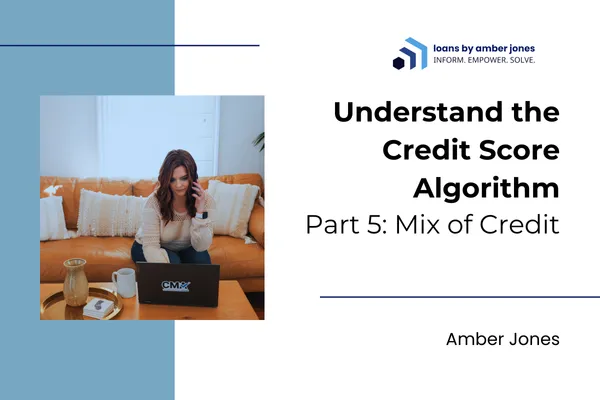
Understand the Credit Score Algorithm – Part 5: Mix of Credit
“If you want to get into the 700s or 800s, you’ve gotta have the proper mix of credit.”
– Sam Parker, CEO of MyCreditGuy

🧠 Understand the Credit Score Algorithm – Part 5: Mix of Credit
Featuring Sam Parker, CEO of My Credit Guy Credit Restoration
We’ve made it to the final component in your credit score—and while it makes up a smaller portion of the overall algorithm, it’s still an essential piece of the puzzle. This last factor, called mix of credit, is all about showing that you can handle different types of financial responsibilities.
In this final installment of our 5-part series, Sam Parker, CEO of My Credit Guy Credit Restoration, explains why having both revolving and installment credit is key to maximizing your score—and how this mix demonstrates maturity, balance, and financial know-how.
🎥 Watch Part 5 Now ⬇️
🧾 Why Mix of Credit Matters
Mix of credit makes up 10% of your FICO® score. It evaluates whether you’re responsibly managing both revolving credit (like credit cards) and installment credit (like car loans, student loans, or mortgages).
In the video, Sam explains:
The algorithm looks for diversity in the types of credit you use
Revolving accounts (credit cards) and installment accounts (car, student, or home loans) function differently—and lenders want to see that you can handle both
If you want to build or maintain a strong score (especially 700+), credit cards are a must, even if you dislike using them
Just one type of account (say, only student loans) may not be enough to earn top-tier scores
🧠 Sam’s key reminder: “Whether you like it or not, you’ve gotta have credit cards if you want to maintain a credit score at all.”
✅ Take Action: Balance Your Credit Mix
Want to round out your credit profile and keep your score healthy? Focus on building a well-rounded credit file:
Maintain at least one or two open credit cards and use them responsibly
If you don’t have any installment loans (like a car loan or student loan), don’t rush to get one—but understand how that might limit your score potential
Avoid overusing one type of credit, and keep your balances low
Use your credit cards for small purchases monthly, then pay them off in full
Check your credit report to see what types of accounts you currently have
💬 Final Thought
Your credit mix is like your financial résumé—it tells lenders that you can manage different types of obligations with confidence. And while it’s not the biggest section of your score, it might be the one that helps you level up when everything else is in place.
Remember: it’s not just about having credit. It’s about using it wisely, consistently, and with purpose.

